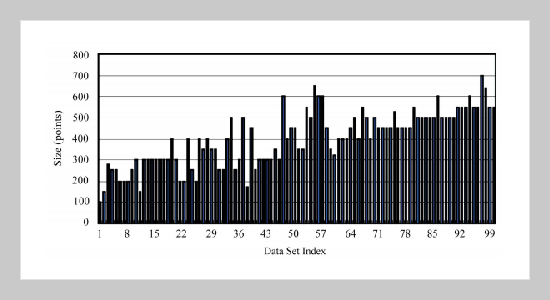Hwei-Jen Lin This email address is being protected from spambots. You need JavaScript enabled to view it.1, Fu-Wen Yang1 and Yang-Ta Kao1 1Department of Computer Science and Information Engineering, Tamkang University Tamsui, Taiwan 251, R.O.C.
Received:
March 4, 2005
Accepted:
April 27, 2005
Publication Date:
June 1, 2005
Download Citation:
||https://doi.org/10.6180/jase.2005.8.2.04
In this paper, we propose a GA-based unsupervised clustering technique that selects cluster centers directly from the data set, allowing it to speed up the fitness evaluation by constructing a look-up table in advance, saving the distances between all pairs of data points, and by using binary representation rather than string representation to encode a variable number of cluster centers. More effective versions of operators for reproduction, crossover, and mutation are introduced. Finally, the Davies-Bouldin index is employed to measure the validity of clusters. The development of our algorithm has demonstrated an ability to properly cluster a variety of data sets. The experimental results show that the proposed algorithm provides a more stable clustering performance in terms of number of clusters and clustering results. This results in considerable less computational time required, when compared to other GA-based clustering algorithms.ABSTRACT
Keywords:
Unsupervised Clustering, Genetic Algorithms, Reproduction, Crossover, Mutation, Fitness, Cluster Validity
REFERENCES
















